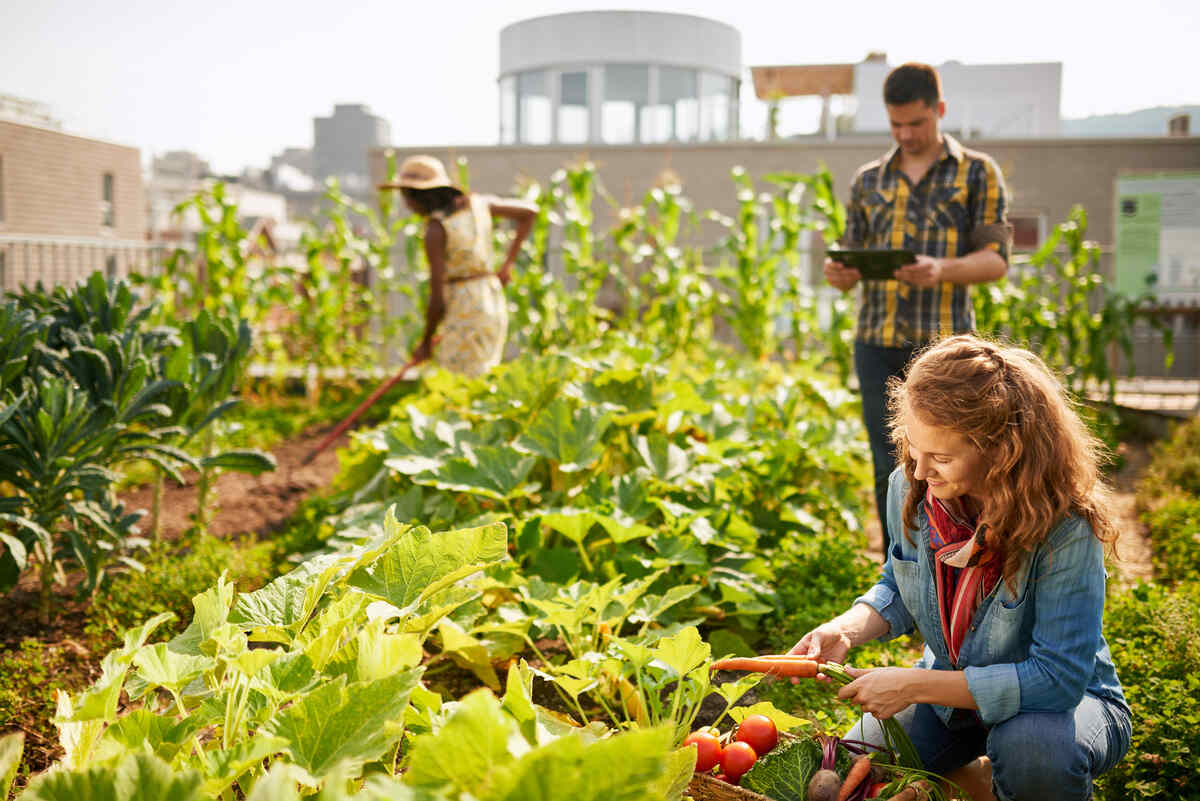The Main Principles Of City Blooming
The Main Principles Of City Blooming
Blog Article
An Unbiased View of City Blooming
Table of ContentsThe Best Guide To City BloomingLittle Known Questions About City Blooming.The Ultimate Guide To City BloomingThe City Blooming StatementsThe 25-Second Trick For City Blooming
Fascinated in growing food to buy in the City of Chicago? Believing concerning starting a community garden? Adjustments to the Chicago Zoning Statute enable agricultural usages like area yards and urban farms in lots of parts of the city. Below is a list of regularly asked inquiries regarding the regulations and guidelines that farmers ought to take into consideration when intending a city agriculture task.
The zoning amendment does not change any type of various other codes dealing with composting, building licenses, buying or leasing City possessed home, service licenses or ecological contamination. There are existing codes that control these problems and they remain in full result and might apply to your job. Community yards are typically had or handled by public entities, public companies or community-based companies and preserved by volunteers.
Urban farms grow food that is planned to be sold, either on a nonprofit or for-profit basis. Due to their commercial objective, city ranches require a service permit.
The smart Trick of City Blooming That Nobody is Talking About
Composting is enabled however only for plant product that is generated and utilized on site. The quantity of compost product can not surpass 25 cubic yards at any type of offered time according to the requirements in 7-28-715 of the City's Municipal Code. Yes. Because the soil at a lot of brand-new yard sites needs amending, garden compost, dirt, wood chips, or other materials can be gotten to construct or improve the growing space - eco-friendly practices.

If a building authorization is required after that the hoophouse will be taken into consideration an accessory structure. You can learn more concerning the structure authorization needs by speaking to the Department of Structures. The 25,000-square-foot size limit is intended to avoid a single community yard from controling a provided block or detracting from the block's existing domestic or commercial personality.
The restriction does not use to yards located in Public Open Space (POS) districts. Can there be more than one community garden that is 25,000 square feet on a single block? Secure fencing is not required, nonetheless, yards that have large car park locations may be called for to set up secure fencing or other landscaping functions.
The Ultimate Guide To City Blooming
B1 & B2 districts require that all industrial usage activities be conducted inside. Is secure fencing needed for metropolitan ranches? Fences might be required, along with landscape design and screening, for particular car park areas and exterior work or storage space areas depending on location and the specific task Find Out More taking area.
Yes. Urban farms call for building licenses and zoning approvals before construction. Other forms of city review might be required relying on details frameworks, activities, dimension, landscape design, licensing, public health and stormwater administration issues. A lot of these requirements are determined in the job layout or permitting procedure, nonetheless, the applicant might be accountable to independently recognize details licenses or permits that might be called for.
Yes. The type of certificate is established by what is taking place at the website. The Division of Service Affairs and Customer Defense can aid establish the certain sort of organization certificate that's needed. Yes. Off street auto parking is required for most business jobs in Chicago. The called for number of car park areas is based on the variety of workers servicing site and not the square video footage of the expanding space.
Some Known Details About City Blooming

Yes. A city farm can sell compost product generated on website, nonetheless, the procedure has to follow the guidelines in 7-28-715 of the Chicago Municipal Code. Yes. Aquaponic systems are allowed inside your home on city farms in numerous zoning districts. A zoning testimonial and structure license is called for in order to set up frameworks or systems and a company permit is called for as explained above.
As much as 5 hives or nests of honey bees may be maintained as an accessory usage. Nonetheless, beekeepers have to sign up with the Illinois Department of Agriculture. To find out more about the recommended zoning change you may call the Department of Housing and Economic Growth, Bureau of Planning and Zoning at 312.744.8563.
Farming in cities and city areas A city ranch in Chicago. Urban agriculture describes various methods of cultivating. https://www.find-us-here.com/businesses/City-Blooming-San-Francisco-California-USA/34090046/, handling, and dispersing food in city locations. The term additionally uses to the location tasks of pet husbandry, tank farming, beekeeping, and gardening in a city context. Urban agriculture is identified from peri-urban farming, which happens in backwoods beside suburbs.
Excitement About City Blooming
It can entail an activity of organic growers, "foodies" and "locavores", that look for to form social media networks based on a shared principles of nature and area holism. These networks can develop using official institutional support, coming to be integrated into neighborhood town as a "shift community" movement for lasting urban development.
The much more direct accessibility to fresh veggie, fruit, and meat items that might be know via metropolitan agriculture can boost food protection and food safety and security while reducing food miles, leading to lower greenhouse gas exhausts, thus contributing to environment modification reduction. Several of the initial proof of urban agriculture comes from Mesopotamia.
Report this page